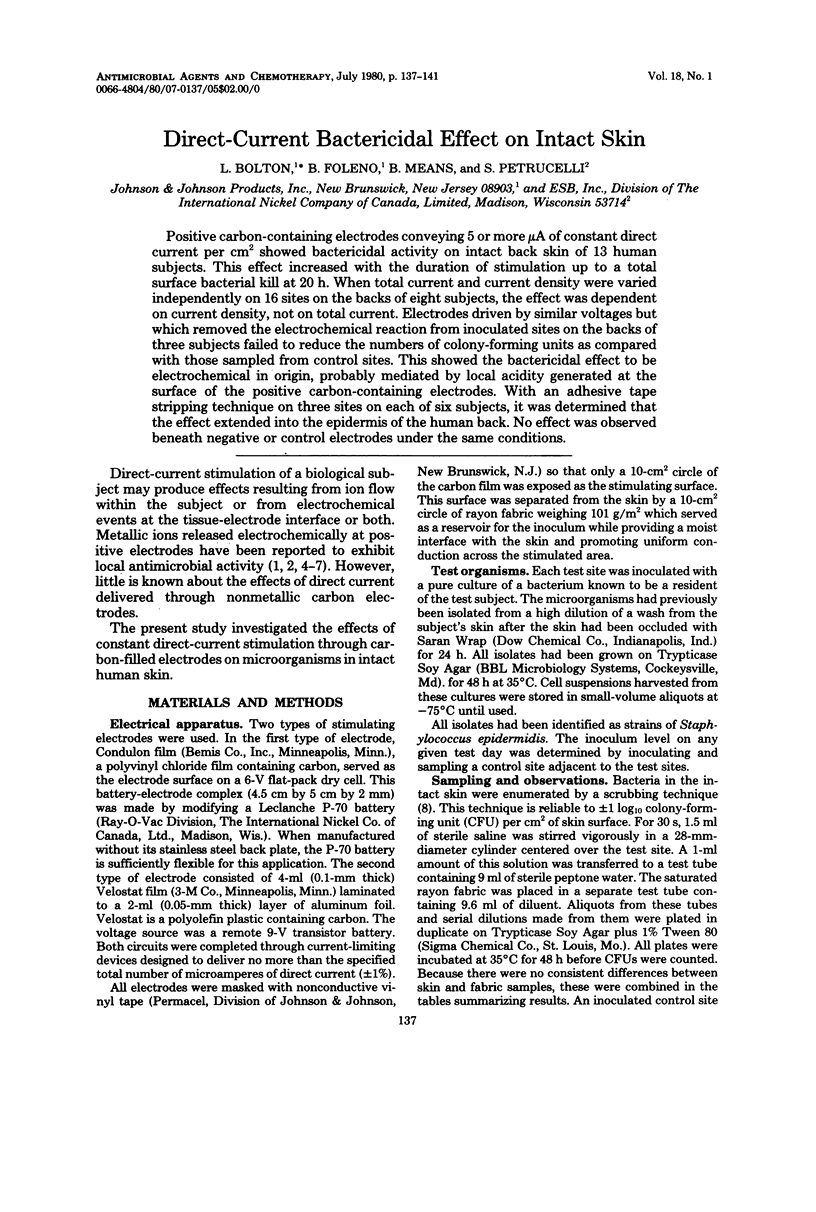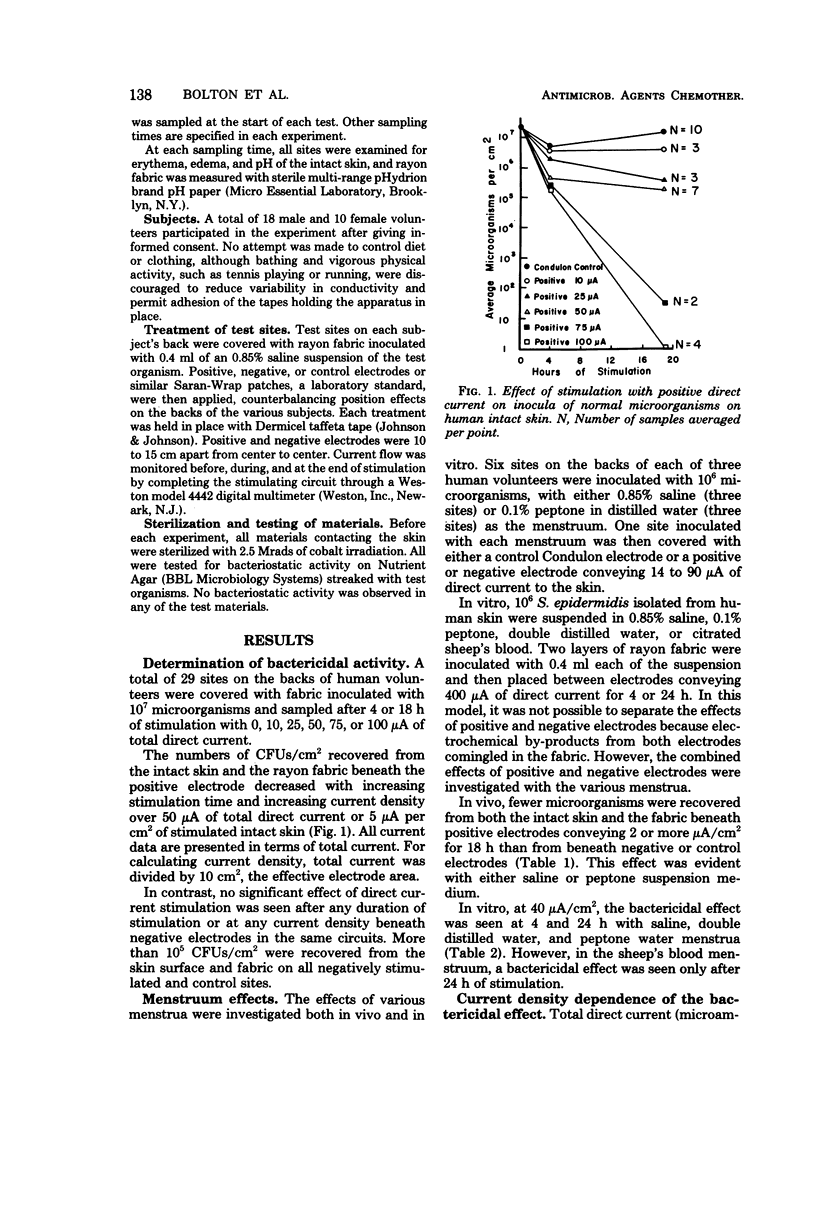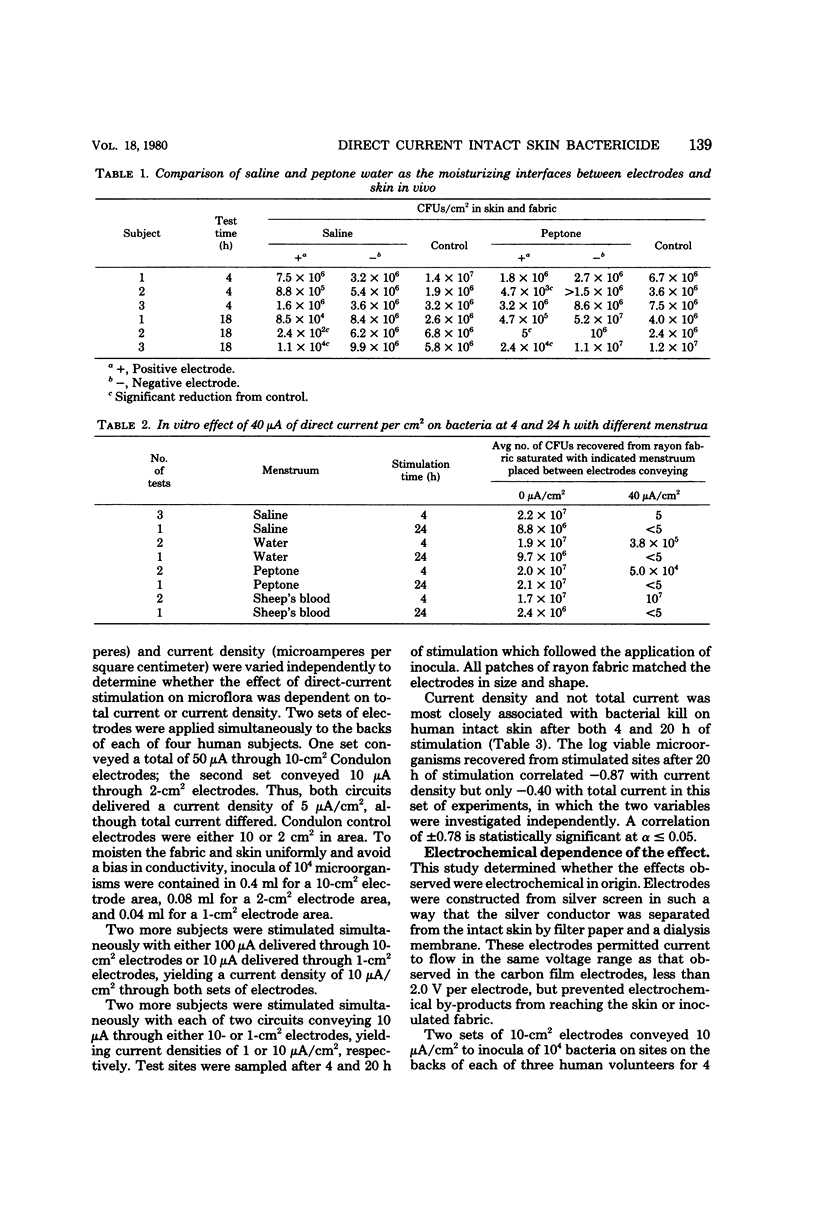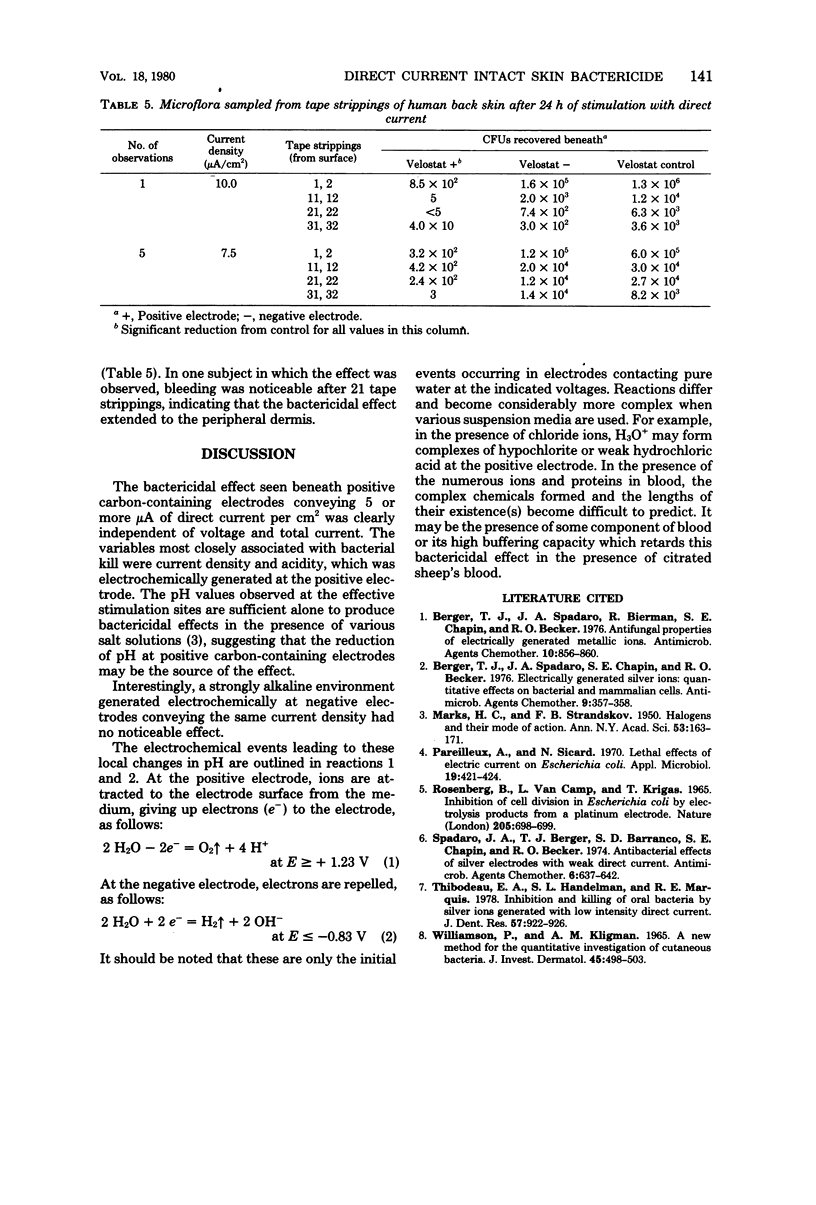Abstract
Positive carbon-containing electrodes conveying 5 or more microA of constant direct current per cm2 showed bactericidal activity on intact back skin of 13 human subjects. This effect increased with the duration of stimulation up to a total surface bacterial kill at 20 h. When total current and current density were varied independently on 16 sites on the backs of eight subjects, the effect was dependent on current density, not on total current. Electrodes driven by similar voltages but which removed the electrochemical reaction from inoculated sites on the backs of three subjects failed to reduce the numbers of colony-forming units as compared with those sampled from control sites. This showed the bactericidal effect to be electrochemical in origin, probably mediated by local acidity generated at the surface of the positive carbon-containing electrodes. With an adhesive tape stripping technique on three sites on each of six subjects, it was determined that the effect extended into the epidermis of the human back. No effect was observed beneath negative or control electrodes under the same conditions.
Full text
PDF




Selected References
These references are in PubMed. This may not be the complete list of references from this article.
- Berger T. J., Spadaro J. A., Bierman R., Chapin S. E., Becker R. O. Antifungal properties of electrically generated metallic ions. Antimicrob Agents Chemother. 1976 Nov;10(5):856–860. doi: 10.1128/aac.10.5.856. [DOI] [PMC free article] [PubMed] [Google Scholar]
- Berger T. J., Spadaro J. A., Chapin S. E., Becker R. O. Electrically generated silver ions: quantitative effects on bacterial and mammalian cells. Antimicrob Agents Chemother. 1976 Feb;9(2):357–358. doi: 10.1128/aac.9.2.357. [DOI] [PMC free article] [PubMed] [Google Scholar]
- MARKS H. C., STRANDSKOV F. B. Halogens and their mode of action. Ann N Y Acad Sci. 1950 Aug;53(1):163–171. doi: 10.1111/j.1749-6632.1950.tb31941.x. [DOI] [PubMed] [Google Scholar]
- Pareilleux A., Sicard N. Lethal effects of electric current on Escherichia coli. Appl Microbiol. 1970 Mar;19(3):421–424. doi: 10.1128/am.19.3.421-424.1970. [DOI] [PMC free article] [PubMed] [Google Scholar]
- ROSENBERG B., VANCAMP L., KRIGAS T. INHIBITION OF CELL DIVISION IN ESCHERICHIA COLI BY ELECTROLYSIS PRODUCTS FROM A PLATINUM ELECTRODE. Nature. 1965 Feb 13;205:698–699. doi: 10.1038/205698a0. [DOI] [PubMed] [Google Scholar]
- Spadaro J. A., Berger T. J., Barranco S. D., Chapin S. E., Becker R. O. Antibacterial effects of silver electrodes with weak direct current. Antimicrob Agents Chemother. 1974 Nov;6(5):637–642. doi: 10.1128/aac.6.5.637. [DOI] [PMC free article] [PubMed] [Google Scholar]
- Thibodeau E. A., Handelman S. L., Marquis R. E. Inhibition and killing of oral bacteria by silver ions generated with low intensity direct current. J Dent Res. 1978 Sep-Oct;57(9-10):922–926. doi: 10.1177/00220345780570091901. [DOI] [PubMed] [Google Scholar]
- Williamson P., Kligman A. M. A new method for the quantitative investigation of cutaneous bacteria. J Invest Dermatol. 1965 Dec;45(6):498–503. doi: 10.1038/jid.1965.164. [DOI] [PubMed] [Google Scholar]


